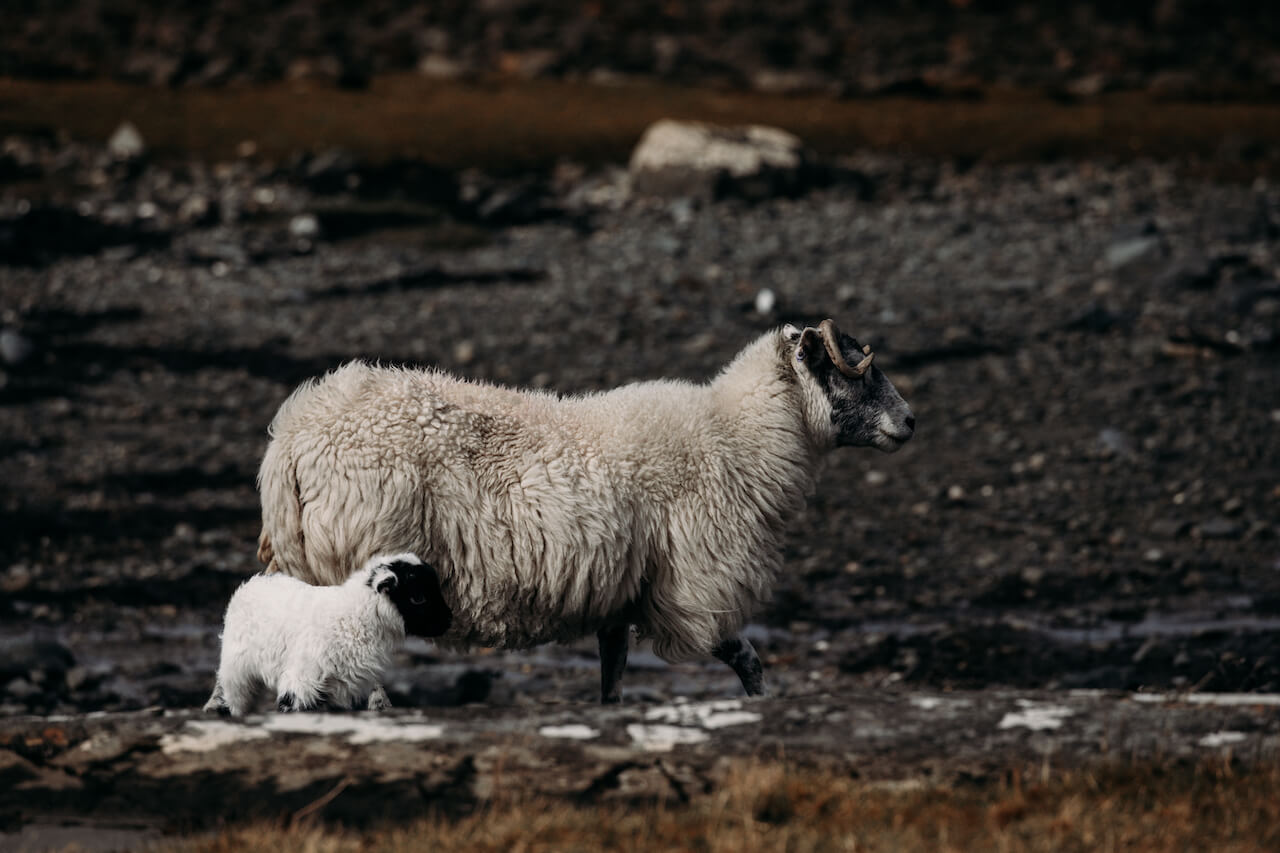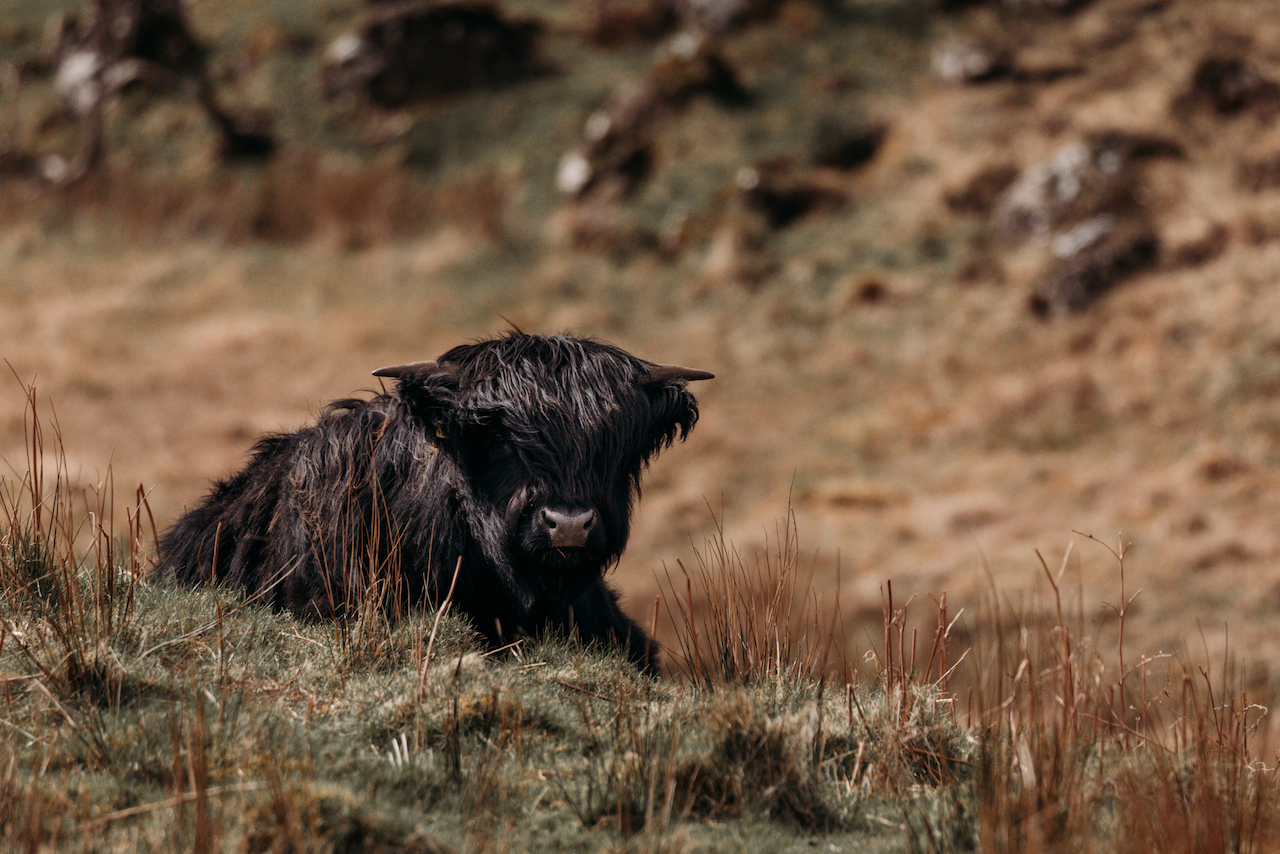I crawl through a mossy plateau on Lunga, the largest island of Scotland’s Treshnish archipelago, silently setting up my camera for continuous shooting mode.
Other photographers lie motionless in the grass, pointing their cameras over the edge of the windswept boulder cliff coast.
It is an early spring afternoon, and an icy breeze sweeps in off the rough Atlantic Ocean.
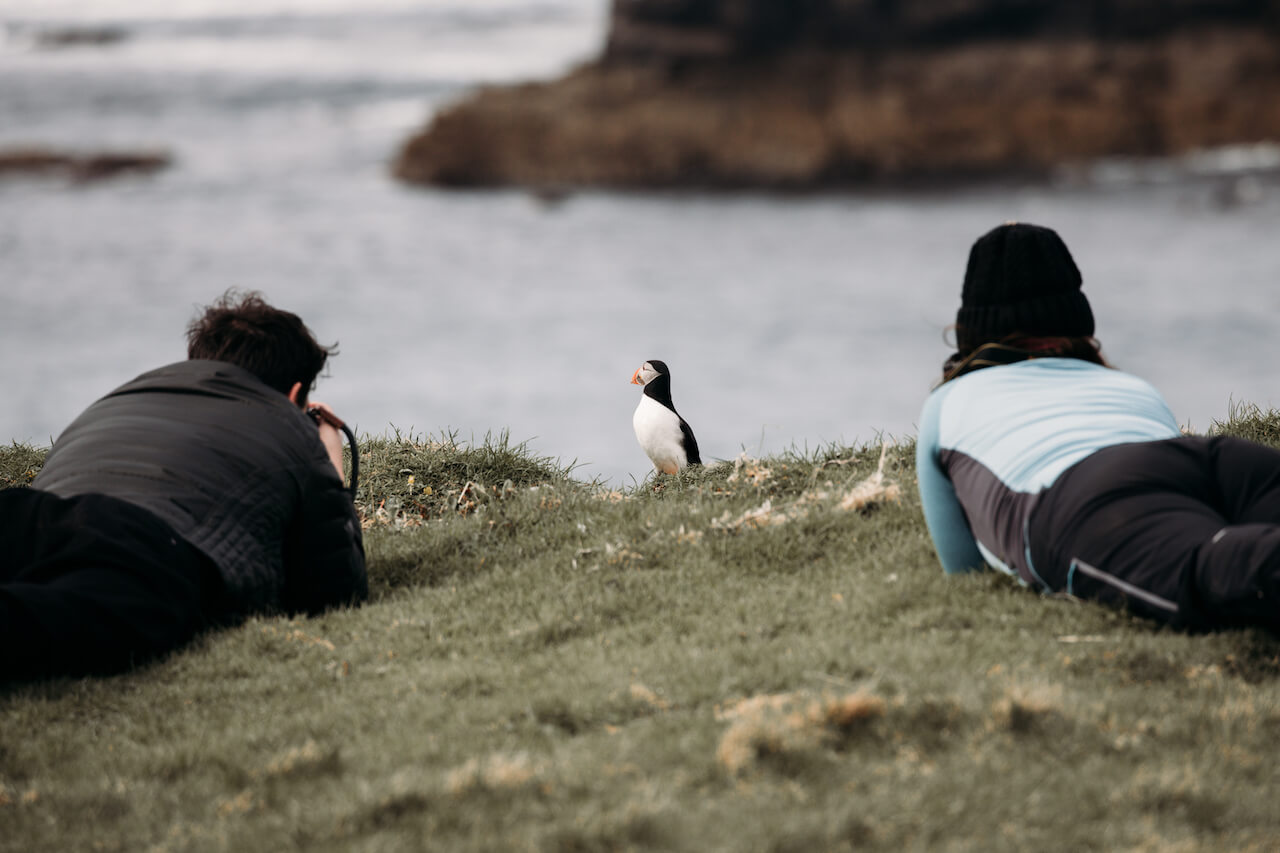
I hold my breath when a puffin with a tangerine-coloured beak and penguin-like patterns finally fills the frame of my camera, showing off his charm like a Hollywood star on the red carpet.

He sways back and forth on his webbed feet, reminiscent of rudders, flaunting his wings boldly over the raw and uninhabited land.

The Isle of Lunga, located west of Mull in the Inner Hebrides, is a place that humans have explored without significantly altering its landscape.
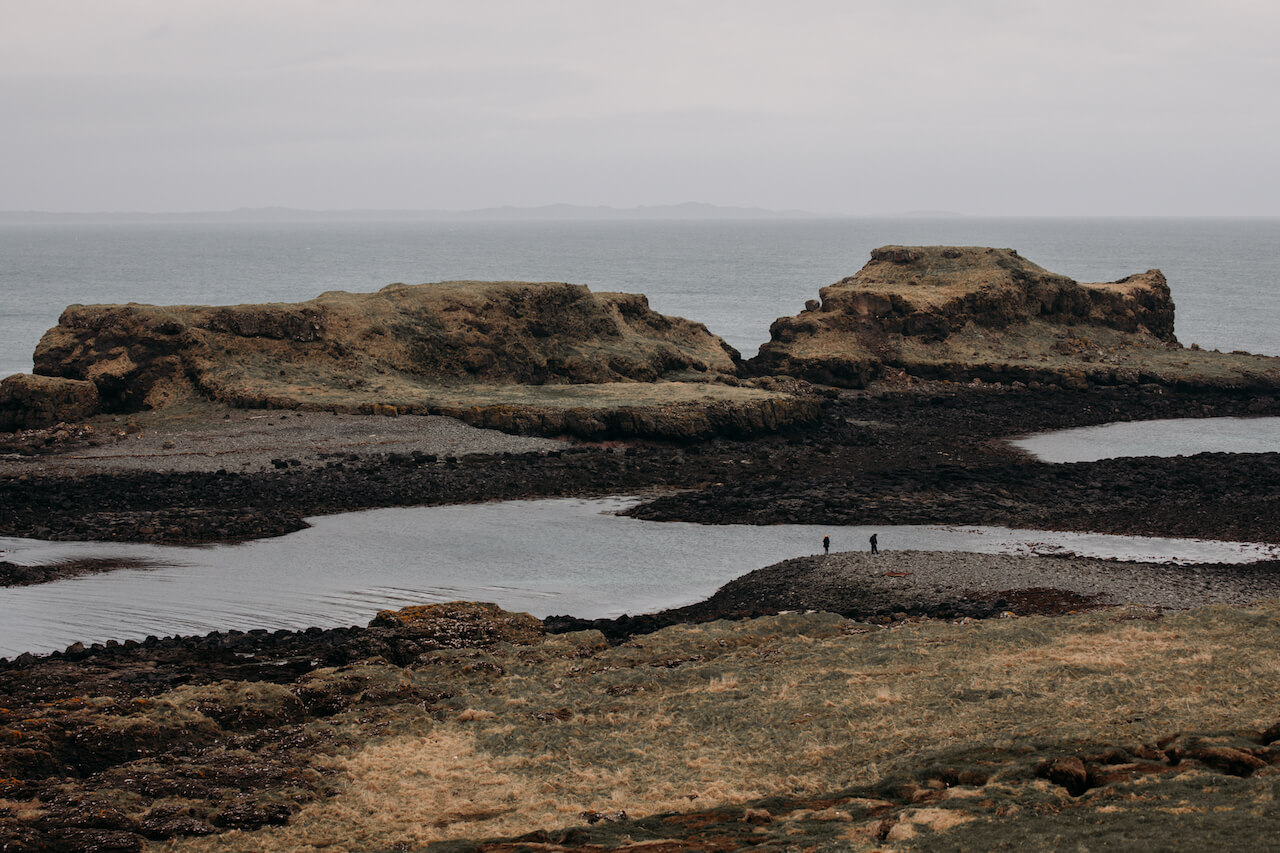
The last settlers left the island in the early nineteenth century, and a wide range of species have thrived here largely undisturbed by civilisation.
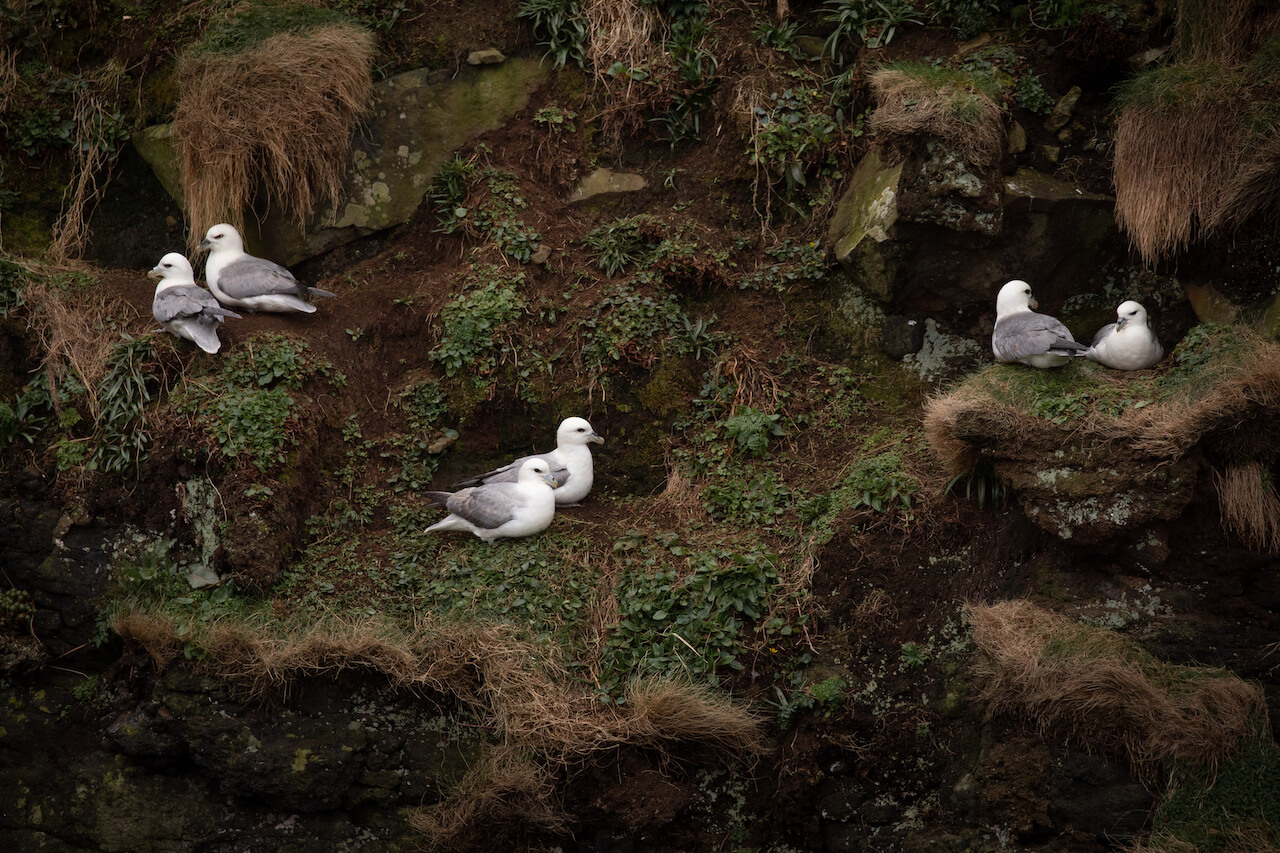
Owned by the Hebridean Trust, the island has been transformed into a haven for naturalists and one of the finest wildlife destinations in Britain.

Lunga has been designated as a Site of Special Scientific Interest due to its rich biodiversity and geological characteristics.
It is home to marine animals such as the common and Atlantic grey seals and over 6000 seabirds, including razorbill, kittiwake, fulmar, great skua, and a colony of Atlantic puffins that visit the island during their nesting season from mid-April to early August.

As I continue to press the shutter, more puffins swiftly land near their tiny burrows to feed their chicks. Hiding away from thieving seagulls, they scuttle quickly below ground with their beaks filled with herring. Some hilariously shake their heads or squabble, completely unperturbed by a crowd of birdwatchers.
Many tourists visit the island exclusively for ‘puffin therapy’, which involves watching puffins for as long as it takes to calm the mind and soothe the soul.
Others come here to ramble along the shore, explore the volcanic landscape, picnic on the meadows sprinkled with primroses, or watch the agile flights of white-tailed eagles through powerful binoculars.
Later, I head off to Harp Rock, also called Dun Cruit, hiking up the unmarked and unmaintained pathways towards the west side of the island.

The rugged and muddy ground makes the ascent arduous. Some hikers rest on the rocks, their legs covered in cuts and scratches.
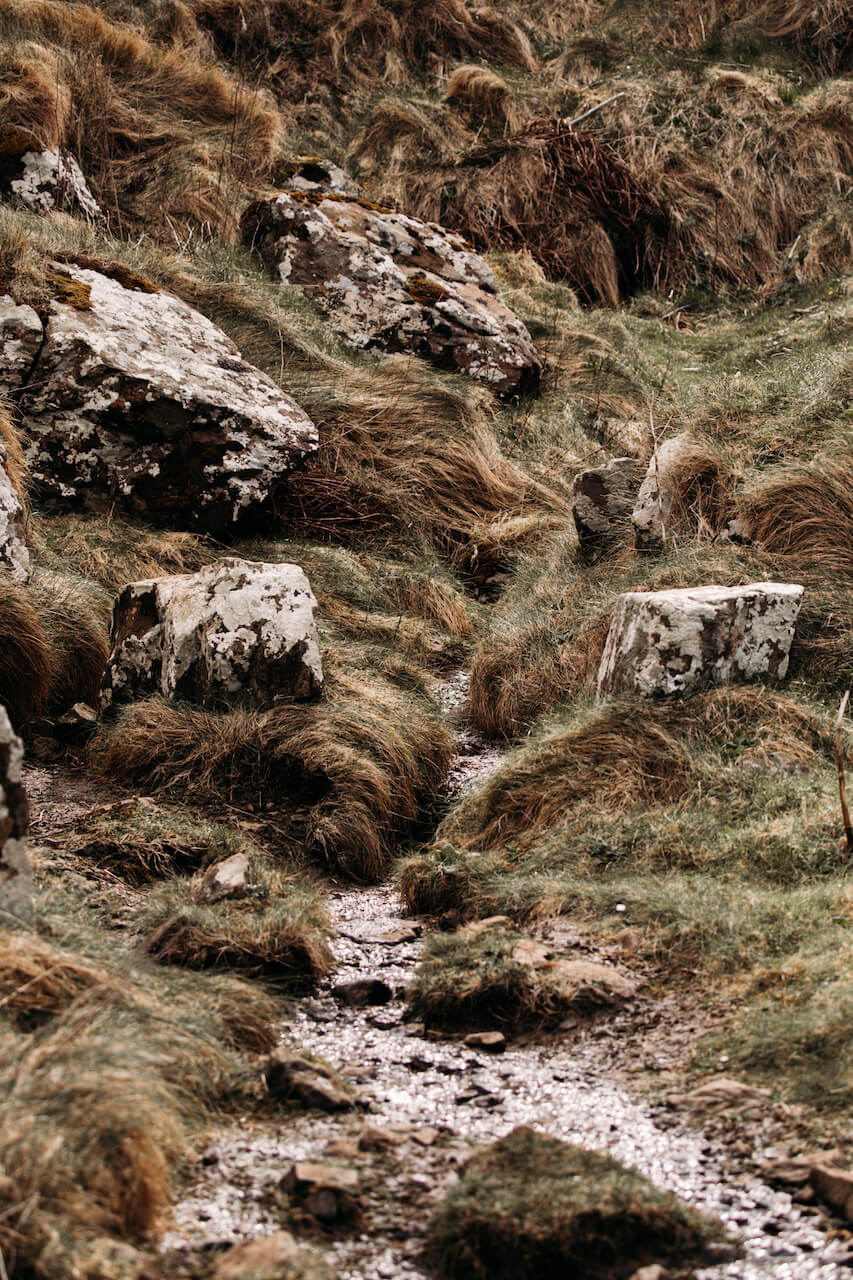
The high-pitched, staccato piping noises, which I faintly began to hear on the paths, get louder as I approach my destination, an inaccessible rocky stack.
Separated from the coastal cliffs by a narrow gut, Harp Rock serves as the perfect refuge for thousands of seabirds.
Large colonies of razorbills and kittiwakes appear as tiny little dots on the steep cliff ledges.

A group of black guillemots, silhouetted against the sky and huddled atop the volcanic rock, seem to be on the lookout for anyone who might try to invade their habitat.

Meadow pipits rise and fall in a bounding flight over the grassland, while butterflies softly flap their wings in an explosion of colour.

Unspoiled by man-made facilities, the island looks like a never-never land.
Unlike some nature reserves, where you can sip your coffee while sitting snugly on a glass terrace overlooking nature, Lunga is raw.

It gives you a feeling of wilderness described brilliantly by Stephen Littlewood and Martin Jones in their book Wild Mull:
‘It is where a place and its diverse species evoke in a person a sense of freedom that is so rich and rare as to have an energy, untamed and untrammelled, that raises the spirit just as the wind might lift a soaring eagle’.
I head back north, passing the ruins of a Viking settlement abandoned hundreds of years ago, before following the cliff path down to the shore.
A tour boat bound for Tobermory, the capital of Mull, is approaching the coast. Our two-hour stay on Lunga is drawing to a close.
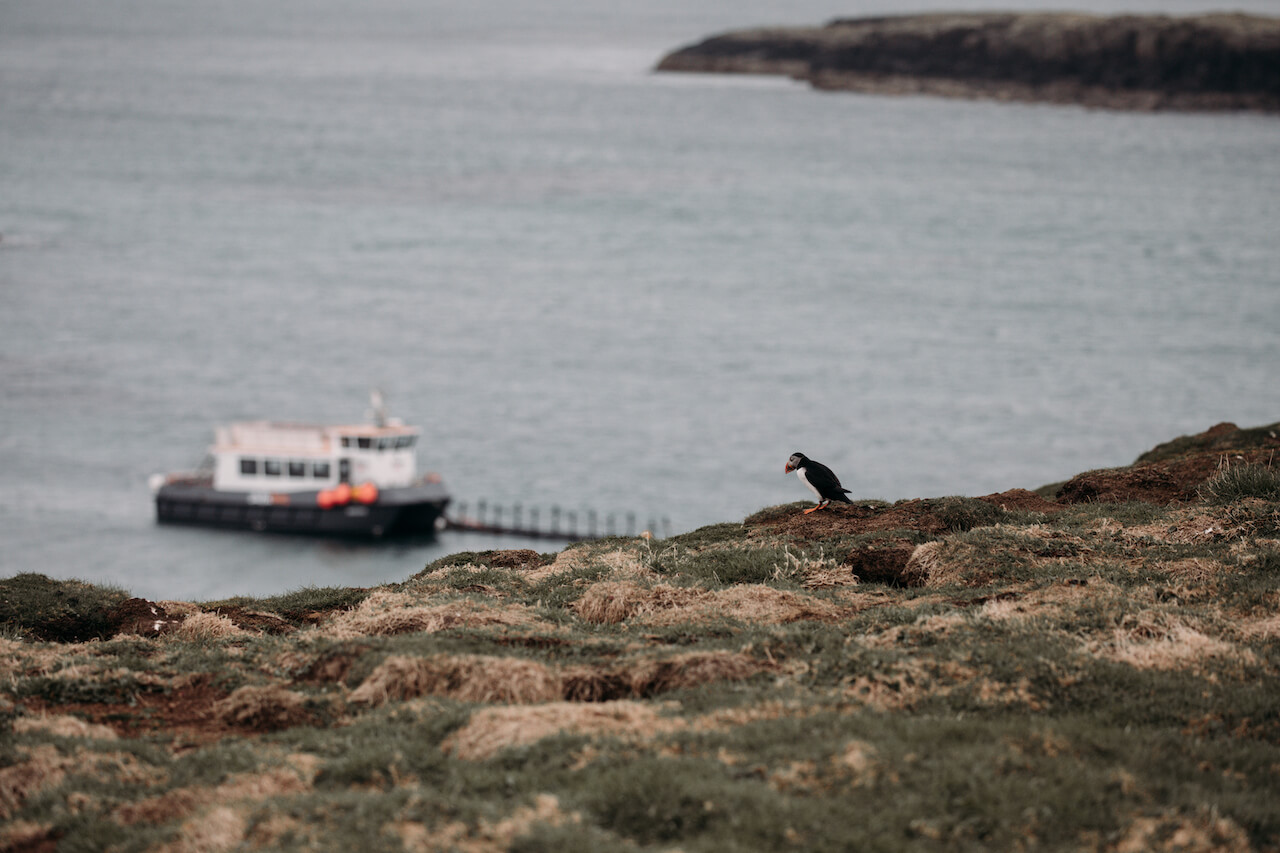
Some people crawl on all fours across the rocky beach towards the boat to avoid slipping on wet boulders. Permanent docks are not allowed on Lunga, and the only way to get on the boat is by pontoon.
A boatman extends his hand to help me regain my balance and hop onboard. As the boat gently pulls away from the beach, I hear the skipper shout loudly, ‘Ladies and gentlemen, look to your right!’
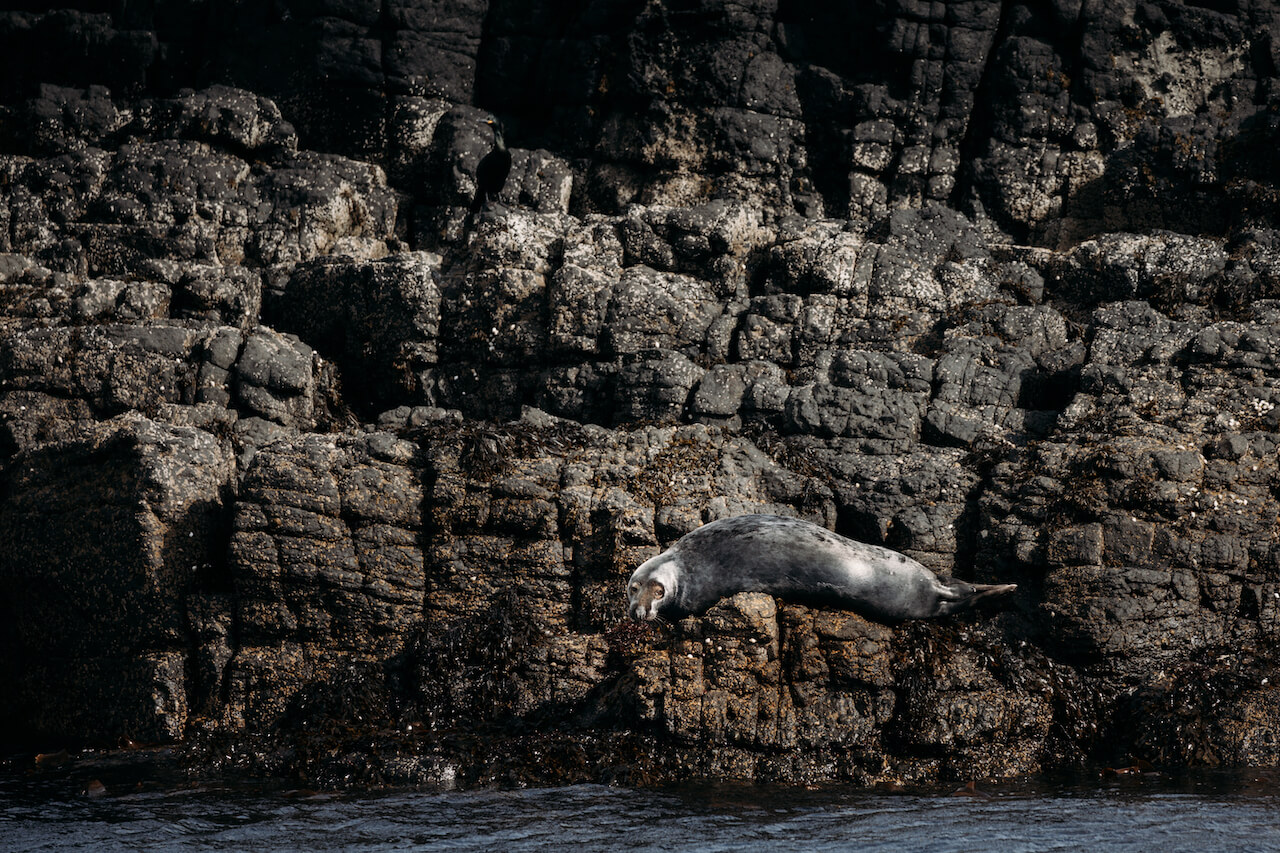
I turn my head and see a large population of seals lounging peacefully on the skerries.
My heart races with excitement as I reach for my camera. The seals keep staring at us with their curious soft brown eyes until our boat vanishes beyond the horizon.
OTHER THINGS TO DO IN THE INNER HEBRIDES
- Explore Tobermory, the capital of Mull and one of the most picturesque ports in Scotland. It is served by three different ferry routes from Oban operated by Caledonian MacBrayne.
- Visit the uninhabited Isle of Staffa to see Fingal’s Cave, a natural wonder that inspired Felix Mendelssohn to compose his Hebrides Overture. It is accessible by boat from Iona or Mull.
- Go on a boat cruise from Mull to spot minke whales, basking sharks, dolphins, seals, and a variety of seabirds.
- Take a trip to the white sand and unspoiled beaches of Coll and Tiree. The isles are served by ferry routes from Oban.
- Visit the Isle of Iona to see an old Benedictine Abbey, and go on a stroll along the rocky beach of St Columba’s Bay to find richly coloured pebbles, including Ionian marble. The ferry to Iona departs from Fionnphort on Mull’s southern point.

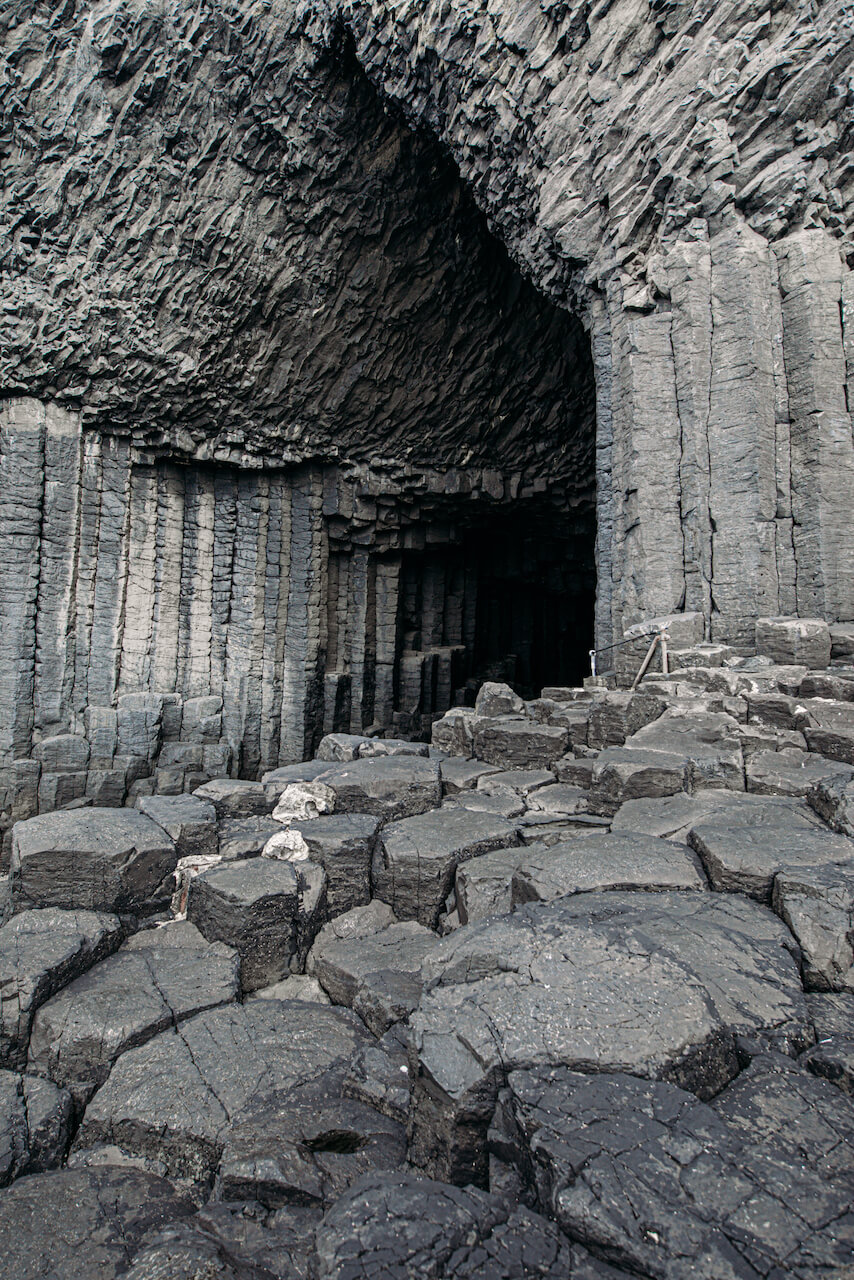
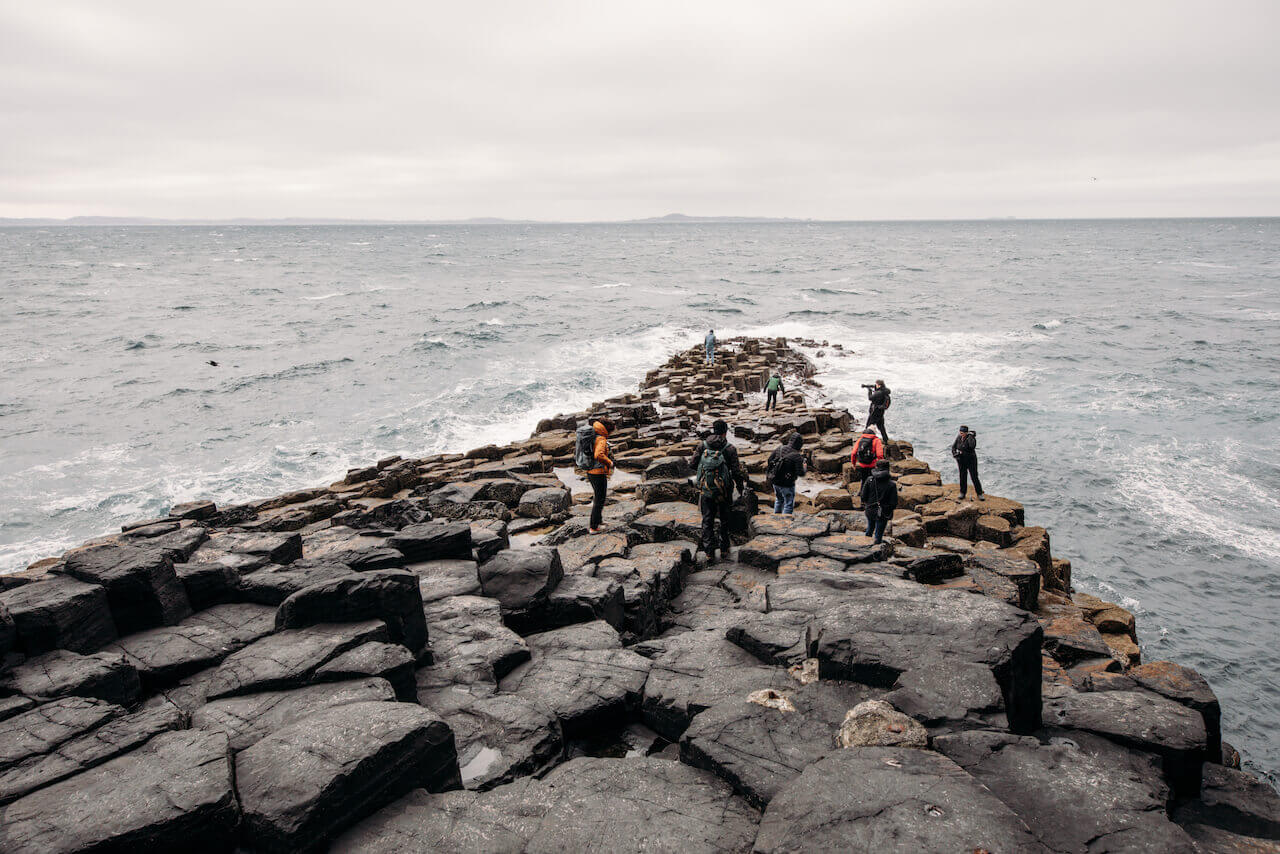
FAST FACTS
Getting there: Organised tours depart to Lunga from the Isle of Mull. Tours are operated by Staffa Tours and offer different departure points and itineraries.
See staffatours.com.
The most direct route to Mull is by ferry from Oban. Ferries run every four hours and terminate in Craignure. West Coast Motors runs bus services from Craignure to Tobermory and Fionnphort.
See www.calmac.co.uk; westcoastmotors.co.uk/services
Touring there: You can reach Lunga exclusively on an organised tour. Treshnish Isles Wildlife Tour, operated by Staffa Tours, provides two hours ashore on the island.
See staffatours.com
Staying there: Once a fisherman’s cottage, The Tobermory Hotel is conveniently set on the waterfront of Tobermory. It offers cosily furnished and uniquely styled rooms with a view over Tobermory Bay from £140 per night. The hotel is located a short stroll away from Ledaig pontoon, a boat departure point for Staffa Tours.
